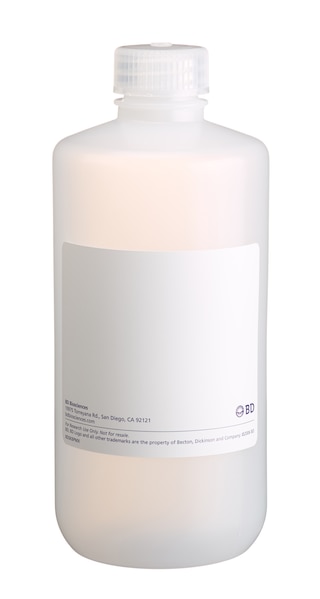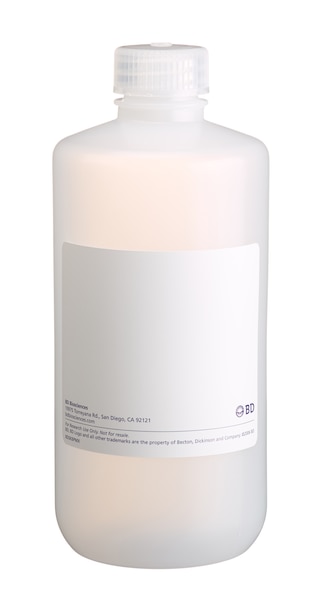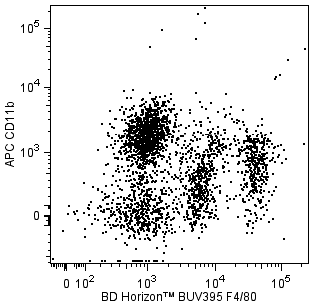-
抗体試薬
- フローサイトメトリー用試薬
-
ウェスタンブロッティング抗体試薬
- イムノアッセイ試薬
-
シングルセル試薬
- BD® AbSeq Assay | シングルセル試薬
- BD Rhapsody™ Accessory Kits | シングルセル試薬
- BD® Single-Cell Multiplexing Kit | シングルセル試薬
- BD Rhapsody™ Targeted mRNA Kits | シングルセル試薬
- BD Rhapsody™ Whole Transcriptome Analysis (WTA) Amplification Kit | シングルセル試薬
- BD Rhapsody™ TCR/BCR Profiling Assays (VDJ Assays) | シングルセル試薬
- BD® OMICS-Guard Sample Preservation Buffer
- BD Rhapsody™ ATAC-Seq Assays
-
細胞機能評価のための試薬
-
顕微鏡・イメージング用試薬
-
細胞調製・分離試薬
-
- BD® AbSeq Assay | シングルセル試薬
- BD Rhapsody™ Accessory Kits | シングルセル試薬
- BD® Single-Cell Multiplexing Kit | シングルセル試薬
- BD Rhapsody™ Targeted mRNA Kits | シングルセル試薬
- BD Rhapsody™ Whole Transcriptome Analysis (WTA) Amplification Kit | シングルセル試薬
- BD Rhapsody™ TCR/BCR Profiling Assays (VDJ Assays) | シングルセル試薬
- BD® OMICS-Guard Sample Preservation Buffer
- BD Rhapsody™ ATAC-Seq Assays
- Japan (Japanese)
-
Change country/language
Old Browser
Looks like you're visiting us from {countryName}.
Would you like to stay on the current country site or be switched to your country?


.png)

Two-color flow cytometric analysis of CRIg expression on mouse peritoneal macrophages. Resident peritoneal cells were harvested from BALB/c mice, washed, and then stained with BD Horizon™ BUV395 Rat Anti-Mouse F4/80 antibody (Cat. No. 565614) and either PE Rat IgG2a, κ Isotype Control (Cat. No. 553930; Middle Plot) or PE Rat Anti-Mouse CRIg antibody (Cat. No. 566737; Right Plot) at 0.5 µg/test. Two-color flow cytometric dot plots showing the correlated expression of CRIg (or Ig Isotype control staining) versus F4/80 were derived from gated events with the forward and side light-scatter characteristics of viable macrophages (Left Plot). Flow cytometry and data analysis were performed using a BD LSRFortessa™ Cell Analyzer System and FlowJo™ software. Data shown on this Technical Data Sheet are not lot specific.
.png)

BD Pharmingen™ PE Rat Anti-Mouse CRIg
.png)
Regulatory Statusの凡例
Any use of products other than the permitted use without the express written authorization of Becton, Dickinson and Company is strictly prohibited.
Preparation and Storage
Product Notices
- Since applications vary, each investigator should titrate the reagent to obtain optimal results.
- An isotype control should be used at the same concentration as the antibody of interest.
- Caution: Sodium azide yields highly toxic hydrazoic acid under acidic conditions. Dilute azide compounds in running water before discarding to avoid accumulation of potentially explosive deposits in plumbing.
- For fluorochrome spectra and suitable instrument settings, please refer to our Multicolor Flow Cytometry web page at www.bdbiosciences.com/colors.
- Please refer to www.bdbiosciences.com/us/s/resources for technical protocols.
関連製品


.png?imwidth=320)

The 17C9 monoclonal antibody specifically recognizes Complement receptor of the immunoglobulin superfamily (CRIg) which is encoded by the Vsig4 (V-set and immunoglobulin domain containing 4) gene. CRIg is a ~45 kDa single-pass type I transmembrane glycoprotein that contains a variable (V-type) immunoglobulin domain in its extracellular region which is required for binding complement components and promoting phagocytosis. CRIg is expressed on Kupffer cells and tissue resident macrophages, including a subset of resident peritoneal macrophages. CRIg binds complement fragments C3b and iC3b and plays important roles in innate and adaptive immunity. This complement receptor is involved in regulation of the complement cascade and serves as a phagocytic receptor in the clearance of pathogens, immune complexes, and apoptotic cells. CRIg-positive macrophages can reportedly function in the negative regulation of T-cell proliferation and IL-2 production.

Development References (4)
-
Fu W, Wojtkiewicz G, Weissleder R, Benoist C, Mathis D. Early window of diabetes determinism in NOD mice, dependent on the complement receptor CRIg, identified by noninvasive imaging. Nat Immunol. 2012; 13(4):361-368. (Clone-specific: Flow cytometry). View Reference
-
Helmy KY, Katschke KJ, Jr., et al. CRIg: a macrophage complement receptor required for phagocytosis of circulating pathogens. Cell. 2006; 124(5):915-927. (Biology). View Reference
-
Small AG, Al-Baghdadi M, Quach A, Hii C, Ferrante A. Complement receptor immunoglobulin: a control point in infection and immunity, inflammation and cancer. Swiss Med Wkly. 2016; 146:w14301. (Biology). View Reference
-
Vogt L, Schmitz N, Kurrer MO, et al. VSIG4, a B7 family-related protein, is a negative regulator of T cell activation. J Clin Invest. 2006; 116(10):2817-2826. (Biology). View Reference
Please refer to Support Documents for Quality Certificates
Global - Refer to manufacturer's instructions for use and related User Manuals and Technical data sheets before using this products as described
Comparisons, where applicable, are made against older BD Technology, manual methods or are general performance claims. Comparisons are not made against non-BD technologies, unless otherwise noted.
For Research Use Only. Not for use in diagnostic or therapeutic procedures.
Report a Site Issue
This form is intended to help us improve our website experience. For other support, please visit our Contact Us page.